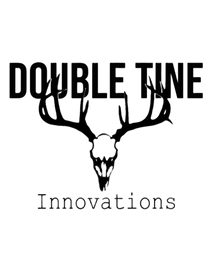Mineral For Whitetails
Minerals have been on the market for Whitetail Deer for years. From salt blocks to granular mineral, you can find many variations in your local sporting good section. Do you even need to use mineral for whitetail deer? Lets take a look at what's the best bang for your bucks!
The Big Question
One of the biggest arguments you'll find on social media is: "What mineral should I use?" This question generally ends up in a war on whether its worth the money to use mineral period. Then the next popular response is a home made mineral loaded with salt or other popular minerals that have the same principles. Salt does a great job at attracting whitetail deer, but it does very little to truly help a deer product milk or antler growth. If you pick up a bag or bucket of mineral that is over 35+% salt, you're truly wasting your money. Secondly, the famous Di Cal, Redmond Salt, and Salt recipe that has been posted across forums nation wide truly does very little to supplement a whitetail deer. At the end of the day, you're providing a lot of salt and some calcium, but that's it.
Does A Deer Need Mineral?
The famous Facebook answer: "No studies have proven they need it." While this is true, how many studies have proven it DOESN'T work? Farmers across the nation use minerals to supplement livestock. As low as milk prices are, they still do it to produce more milk. The cows generally have a large pasture to eat from, grain fed when needed, and also supplementation.
Lets look at the whitetail doe. She also eats a wide variety of forages, but it seems obvious that she would benefit from a well rounded mineral to help aid in producing more and better milk for her fawns. The fawns drinking that milk will become healthier and bigger than non mineral fed does.
A whitetail buck's antlers are loaded with mineral. The QDMA reports "However, a University of Georgia study detected 11 different minerals in the whitetail’s antlers. In addition to calcium (19 percent) and phosphorus (10 percent), the next most common elements were magnesium (1 percent) and sodium (0.5 percent). Lesser amounts of other minerals were found including potassium, barium, iron, aluminum, zinc, strontium and manganese. Besides calcium and phosphorus, little is known about the role of other minerals in antler growth."
The needs for both bucks and does for calcium and phosphorus are very high during the spring and summer months. I strongly believe that it would be hard for these animals to hit those numbers listed above without supplementation.
What Mineral Should I Use?
I look for 2 things when I look at a mineral tag. First, what is the salt content? If it's over 50%, there's absolutely no need to move on. Secondly, is the calcium to phosphorus ratio at or near 2:1. As you've seen from the percentages above, this is one of the most basic principles of feeding a mineral. After that, its breaking down the cost and looking at the rest of the mineral profile. Obviously the more minerals you can see, the better!
Feeding Mineral
When choosing a mineral site, we will generally run one jug 12.5 lb jug of Powermax Mineral , mixed with Powermax Deer Feed in late February. The later in the spring, the less we will use supplemental feed with the Powermax Mineral. Refreshing our sites monthly, we will go to a full mineral site by May. We generally will run 50+ lbs per site, per year, with our last site refreshment in early-mid July. Please know your states feeding/baiting regulations before using these products!
